News
Health Professions Students Share Research at Annual Aletheia Symposium
May 28, 2020
Each spring, NYIT School of Health Professions undergraduate and graduate students gather to present their research at the school’s Aletheia Research Symposium. This year, rather than abandon the event due to the COVID-19 pandemic, the school’s Research Committee organized a two-day Zoom conference, allowing students from the school’s clinical nutrition, health sciences/health and wellness, nursing, occupational therapy, physician assistant studies, and physical therapy programs to gather and present their research to fellow students, faculty, and peers on May 5-6.
More than 150 virtual attendees were welcomed by New York Tech President Hank Foley, Ph.D.; Jerry Balentine, D.O., dean of NYIT College of Osteopathic Medicine and vice president for health sciences and medical affairs, and Gordon Schmidt, Ph.D., dean of the School of Health Professions. This year’s symposium featured 22 student research posters on Rehabilitation, Health & Medicine, Lifestyle Behaviors, and Technology, with awards given for each category. All presentations were judged by a panel of faculty members, with scoring based on relevance of topic, poster format, and presentation.
“This event lets students disseminate their research to a much larger audience than their own class,” says Professor John Handrakis, D.P.T., who co-chaired the event with Associate Professor Rosemary Gallagher, Ph.D., D.P.T. “They are now reaching students and faculty of other programs within the School of Health Professions, and they are witnessing how other programs conduct research. In the process, they are gaining valuable insight for their future endeavors.”
The event also featured a keynote speech by Assistant Professor Christina Finn, Ed.D., OTR/L, on her study, “Effects of a Faculty Training Program on Knowledge and Awareness of Student Concussion and Academic Performance.”In light of the increasing rates of concussions and the unique profile of collegiate athletes, there are widespread concerns about the effect of concussions on students’ ability to return to sports and on their subsequent academic performance. In her research, Finn looks at who supports students as they return to school after such injuries, the feasibility of training programs to assist returning students, and how specific training might help faculty improve their support.
“Although this year’s Aletheia was in a different format, it was my pleasure to share my research in this virtual platform,” says Finn. “It was a great opportunity to kick off a wonderful event that showcased the hard work of our students within the School of Health Professions.”
First-place Student Presentations
Health and Medicine
“Blue Light vs. Yellow Light Use at Night and Their Effects on Perceived Sleep Quality”
Student Researchers: Emily Barbaro, Kirstie Chia, Brittney Guro, Sarah Hazany, Tianna Stephens, Valerie Thoroyan
Advisor: Corri Wolf, PA-C, M.S., RD
As screens become almost unavoidable in daily life, it has become important to examine the effect of blue light on sleep functioning. Apple designers have tried to accommodate users with “night shift” modes that switch users to yellow light for a period of time before going to sleep. This group’s two-week study, involving 47 participants ranging in age from 18 to 70, examined the difference in sleep patterns between those who were exposed to blue light and those who were exposed to yellow light before going to sleep. Ultimately, the student researchers found that users who switched to yellow light before bedtime fell asleep faster (45%) and had better quality of sleep (49%).
Lifestyle
“Academic Success and Sleep Patterns in Physician Assistant Students”
Student Researchers: Moshe Bedziner, Odalys Caro, Chelsea Jensen, Harrison Lave, Erica Siverding, Zachary Waschevski
Advisor: Barbara Piccirillo, PA-C, M.S.
Behavior and performance are affected by sleep patterns, and this can be especially apparent among students. Quantity and quality of sleep can affect memory, mood, and metabolism, among other things. This study examined the correlation between sleep functions and academic performance of Physician Assistant students. By gathering information from PA students throughout the United States about their demographic profiles, hours of sleep on a typical weekday, hours of sleep before an examination, and course grades and overall GPA, this team found that while there is no significant association between duration of sleep and overall academic performance, sleeping seven or more hours the night before an exam may lead to higher exam grades.
Technology
“Student Veterans’ Willingness to Use Telemedicine for Mental Health Services”
Student Researchers: Vyacheslav Davydov, Midhath Habeeb, Jiawen Huang, Meena Kovoor
Advisor: Sara Winter, PA-C, M.S., SLP
As technology and necessity allow for remote access to health services, the popularity of telemedicine has increased. Examining one of the more vulnerable populations when it comes to mental health, this study surveyed 34 student veterans’ willingness to make use of such technology when seeking support for mental health and problems including PTSD, depression, and substance abuse. The research group found that there was a direct correlation between awareness of the service and veterans’ willingness to participate: the more they learned about it, the more likely they were to take advantage of the opportunity.
Rehabilitation
“Acute Effects of Wearing a Running Belt Device on Sagittal Plane Kinematics during Treadmill and Overground Running in Novice Runners”
Student Researchers: David Lee, Matthew Moskowitz, Christopher Palladino, Alex Samuel, Greg Sher, Stephanie Sparacino
Advisor: Eric Greenberg, PT, D.P.T., SCS, CSCS
Hobby running is one of the most common and effective forms of exercise, but studies show that more than 50 percent of running injuries are incurred by recreational runners. By looking at the effects of a specialized belt system on the lower extremity sagittal plane kinematics, this study examined the efficacy of such belt systems in decreasing pain and injury. Focusing on eight novice runners, this research team looked at the effects of the use of belts while running on a treadmill and over ground, and found the use of such a belt may decrease stress in knee and hip joints of runners, especially for those running over ground.

By Alix Sobler
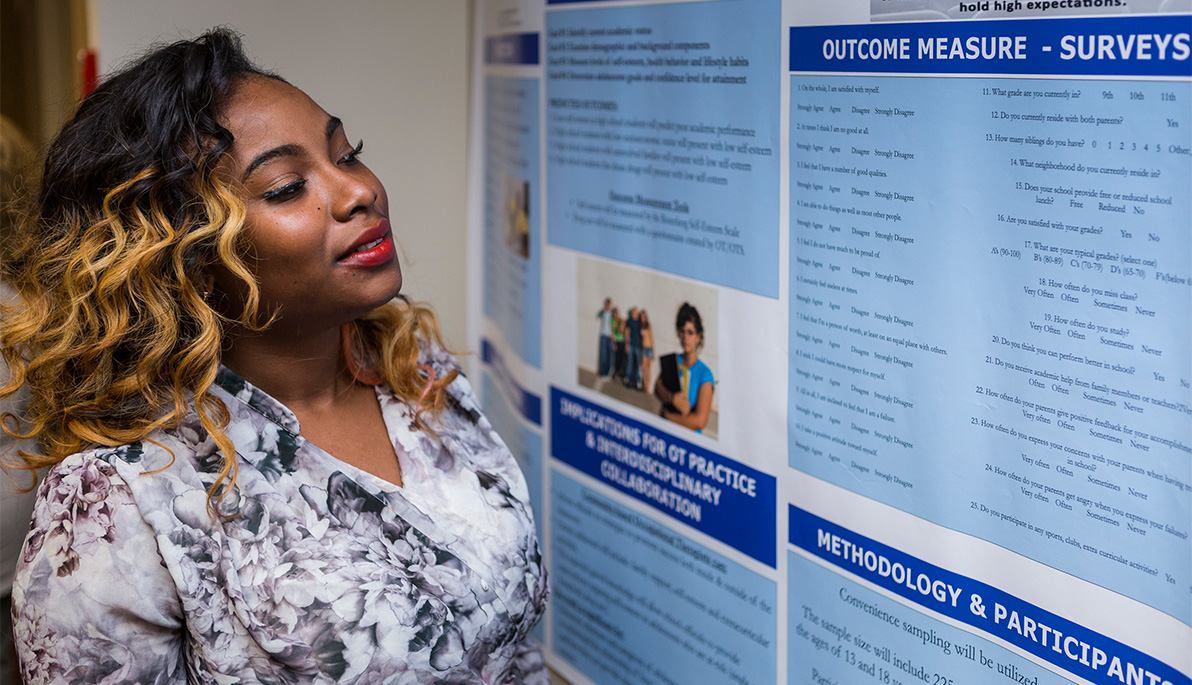
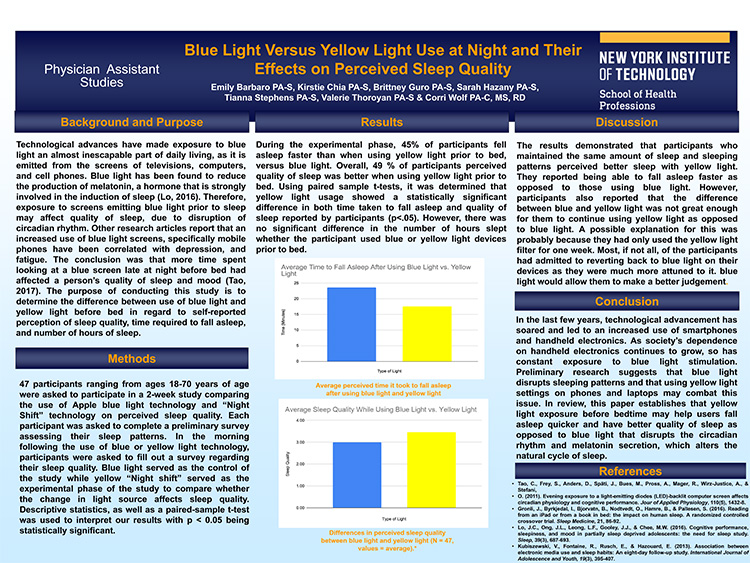
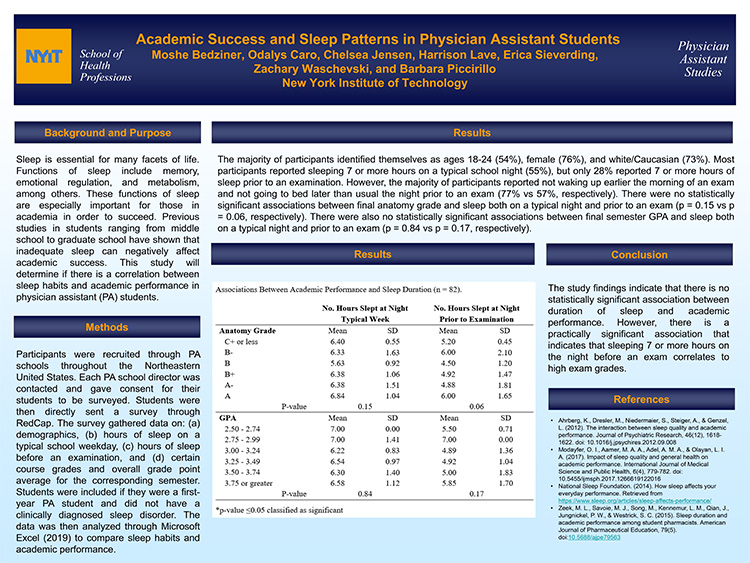
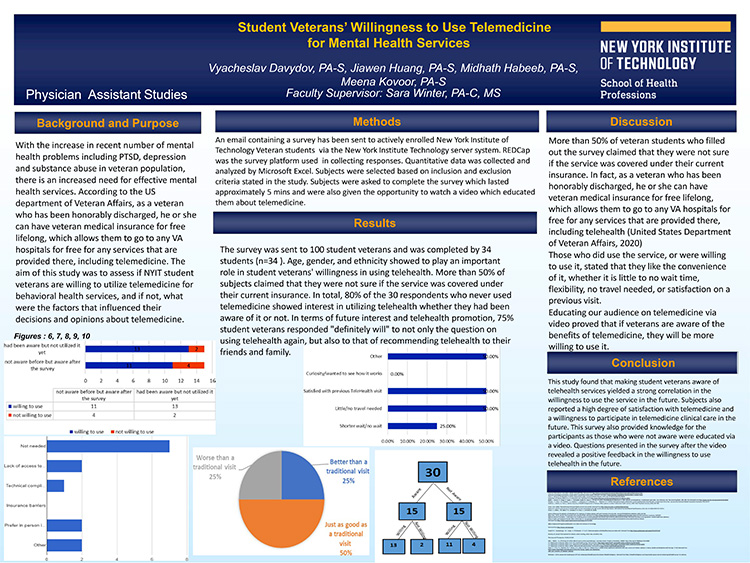
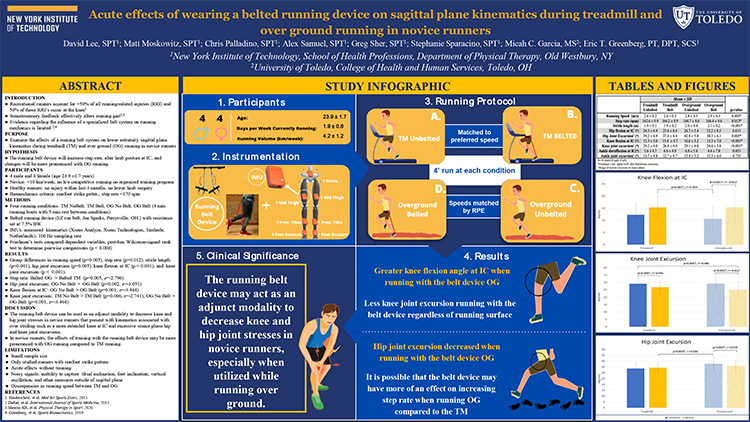
 Open Photo Gallery
Open Photo Gallery


